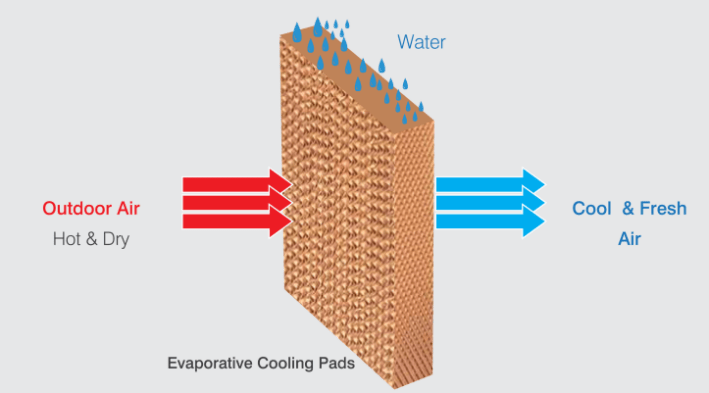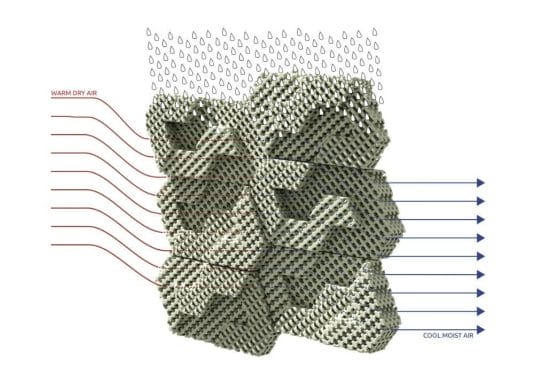
What if buying air conditioners or coolers is not a mandate anymore while setting up a built form? What if people living in arid regions have cooler indoors? What if you can cool your spaces and have less than usual bills to pay? Sounds Interesting right!
The answer to all this would be Cooling bricks.
Designed and developed by Ronald Rael and Virginia San Fratello in 2015, Cooling brick is a 3D printed porous ceramic brick held together with mortar. It is designed as a three-dimensional lattice is a hybrid of the ceramic lightweight slab and wooden lattice to let air pass through the perforations.

The concept of Cooling Bricks is devised from the working principle of the Muscatese Evaporative cooling window which involves a wood screen or Mashrabiya and water-filled ceramic vessel used mostly in desert areas for keeping the interiors cool and bearable.
The concept is referred to as the Evaporative cooling effect in technical terms where hot air passes through the water adding moisture in the air that results in a temperature drop and cooler, fresh air as a result. Before refrigeration was discovered, this phenomenon was implicated in cooling effects for a long time. Strolling back to 2500 BC and studying building characteristics would cast a shadow on the slaves fanning jars of water used in frescoes to cool a room and hence put into the limelight the ancestral usage of Evaporative cooling.

Working on the same principle, these designers from a California based studio – Emerging Objects, have designed this sponge-like brick termed cooling brick which allows air to pass through it, and as it passes through the ceramic, the water in its micropores lowers the temperature via evaporative cooling principle and brings cooler air in the interiors. Emerging Objects is a studio focused on 3D printing of architectural components like cement polymers, wood, rubber composites from pulverized tires. the objective behind this innovation was to combine the traditional building methods with modern digital technology and to devise a reduced energy consumption alternative that optimizes the cooling performance of a built-form.

The bricks are modular and can be interlocked using mortar for a strong bond to create a wall surface. The stacking of modules creates a screen-like structure that shades a large percentage of the wall surface increasing the cooling effect and providing protection from the sun which results in a better performance of a cooling brick wall. And the pros don’t end here, it does not require any molds or formwork, the modules stack up as pieces of legos, which reduces the production of waste – a step toward a sustainable building design.
Cooling bricks act as an option for low-cost materials that can be produced easily and enhance handy building construction techniques used with a positive impact on the environment and comfortable surroundings in the interiors as well. This energy-efficient technique can be majorly used in hot and dry regions where air conditioning drives survival during the peak season and the cooling brick can act as a game-changer.
Image Credits: emergingobjects.com




















